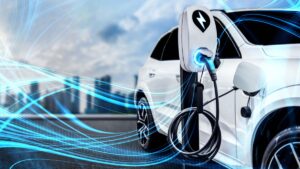Electric vehicles (EVs) are becoming increasingly popular as people around the world switch to greener, more sustainable ways to travel. But for electric vehicles to be widely adopted, charging stations must be built that are efficient and easy to use. Having a strong network of electric vehicle (EV) charging stations is important to help the EV market grow and enable drivers to transition from gas-powered cars to electric vehicles with confidence and ease. This article discusses the key components of building a well-functioning electric vehicle charging infrastructure, as well as the challenges and opportunities that come with it.
1. Why Electric Vehicle Charging Stations Matter
EV charging infrastructure is what holds the EV ecosystem together. Without a strong network of charging stations, the transition to electric vehicles will be much more difficult. Charging infrastructure is a key component in alleviating range anxiety, a common problem among people looking to buy an electric car. Range anxiety is the fear that the battery will run out before it reaches a charging station. By providing a large number of charging stations in places that are easily accessible to people, we can alleviate these concerns and encourage more people to buy electric vehicles.
2. Current Status of Electric Vehicle Charging Infrastructure
Where you live has a big impact on the current state of EV charging infrastructure. Many cities and developed countries are seeing an increasing number of public charging stations, such as fast chargers and level 2 chargers. However, rural and less developed areas often lack charging stations, making it difficult for some people to charge. It is important to have charging stations so that people can travel long distances and all-electric vehicle owners can easily charge their cars.
3. Different Types of Electric Vehicle Chargers
To create a charging system that works well, you need to understand the different types of EV chargers that are available. There are mainly three types:
Level 1 Chargers: These chargers plug into a standard 120-volt wall outlet and are typically used to charge mobile phones at home. They charge very slowly, which can be great for people who have shorter trips because they can leave their car parked to charge overnight.
Level 2 Chargers: These chargers use a 240-volt outlet and can charge devices faster than Level 1 chargers. Level 2 chargers can be found in homes, workplaces, and public charging stations. This is a more convenient option for people who need to charge their electric cars during the day.
DC Fast Chargers: These chargers provide fast charging by sending high-voltage direct current (DC) to the car’s battery. DC fast chargers are often found on highways and other major travel routes, allowing people to travel long distances and charge their cars faster.
4. Smart Layout of Charging Stations
A key part of building an effective EV charging infrastructure is deciding where to place charging stations. Charging stations should be strategically placed in high-traffic areas, such as shopping malls, parking lots, and along major highways, so they are easier to access and use. When deciding how many charging stations are needed, it’s also important to consider how many electric vehicles are in a given area.
In cities, charging stations should be located near homes, businesses, and popular tourist attractions. In rural and sparsely populated areas, the focus is on placing charging stations along major routes so people can travel long distances without worrying about running out of power.
5. Integrate with Clean Energy
Electric vehicle charging stations that use renewable energy help make electric vehicles more environmentally friendly. Charging stations can be powered by solar panels, wind turbines, and other forms of renewable energy. This reduces the use of fossil fuels and the overall carbon footprint of charging. By combining electric vehicle charging with clean energy, we can make transportation greener.
6. Collaborate and Build Partnerships
Building an effective electric vehicle (EV) charging infrastructure requires collaboration between many groups, including utilities, private companies, and government agencies. Public-private partnerships can help pay for and build charging stations, and utilities can provide the necessary power and support.
Government policies and incentives are important in encouraging the development of charging infrastructure. Grants, subsidies, and tax breaks can make it easier for businesses and consumers to invest in an EV charging network and reduce costs for everyone. The regulatory framework can also ensure that charging infrastructure is standardized, accessible, and suitable for different types of EVs.
7. The Future of EV Charging Infrastructure
The future of EV charging stations looks bright. Ultra-fast chargers and wireless charging are two examples of new technologies that promise to make charging faster and easier. The continued development of smart grid technology and renewable energy will also enable more stable and sustainable charging networks. As electric vehicles become more popular, it will be very important to build a complete and efficient charging infrastructure. By solving current problems and embracing new technologies, we can create a transportation system that works for everyone and is sustainable.
Conclusion
In summary, keeping electric vehicle charging stations operational is a key part of the shift to greener transportation. We can build a strong network to support the growing demand for electric vehicles and make the future greener by focusing on strategic placement, integrating renewable energy, implementing smart charging solutions, and encouraging people to work together.
FAQs
1. What is electric vehicle (EV) charging infrastructure?
The network of charging stations and other facilities that help charge electric vehicles is called ‘EV charging infrastructure’. There are different types of chargers in this infrastructure, such as level 1, level 2, and DC fast chargers, to accommodate different charging needs and speeds. The installation, maintenance, and management of these charging stations are also part of the infrastructure.
2. What is the point of building a well-functioning EV charging infrastructure?
For electric vehicles to be widely used, a well-functioning charging infrastructure is needed. It makes charging simple and easy, helps reduce range anxiety, shortens the time it takes to charge, and promotes the development of electric vehicles. Having a well-developed charging network makes it easier for EV drivers to find reliable charging stations and encourages more people to switch to EVs.
3. How to install electric vehicle charging stations?
Electric vehicle charging stations are placed in high-traffic areas such as shopping malls, parking lots, and along major highways. In cities, they are distributed among residential areas, commercial areas, and popular tourist attractions. In rural areas, the focus is on adding charging stations along major travel routes to help people who travel long distances reduce range anxiety.
4. How would adding electric vehicle charging stations that use renewable energy help the environment?
Adding renewable energy sources such as solar panels and wind turbines to electric vehicle (EV) charging stations can reduce the use of fossil fuels and pollution caused by charging. By using clean energy to power charging stations, EVs have an even smaller impact on the environment, helping to make the transportation ecosystem more sustainable.
5. What is a smart charging solution? How do they improve charging?
Smart charging solutions use technology to improve charging, control energy consumption, and reduce costs. Dynamic pricing and load management are two features. Dynamic pricing changes rates based on demand and energy costs, and load management balances grid loads. In addition to mobile apps and websites, smart charging systems have user interfaces that provide real-time information on charging station availability, prices, and estimated charging times.




